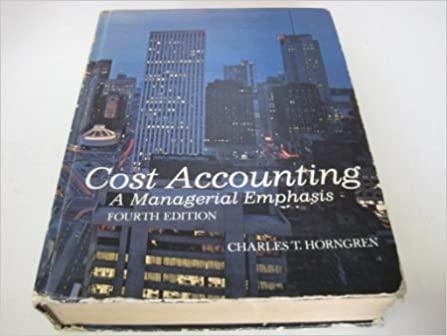Fundamentals of Flexible Budgets The Carey Company produces one uniform product. The assembly department encounters wide fluctuations
Question:
Fundamentals of Flexible Budgets ‘The Carey Company produces one uniform product. The assembly department encounters wide fluctuations in activity levels from month to month. However, the following department-overhead budget depicts expectations of currently attainable efficiency for an “average”
or “normal” level of activity of 20,000 units of production per month:
BUDGET— INCURRED NORMAL “ACTUAL”
MONTH COSTS IN JUNE Indirect labor—variable $20,000 $19,540 Supplies—variable 1,000 1,000 Power—variable 1,000 980 Repairs—variable 1,000 880 Other variable overhead 2,000 1,800 Depreciation—fixed 10,000 10,000 Other fixed overhead 5,000 5,000 $40,000 $39,200 Prepare a columnar flexible budget at 16,000-, 20,000-, and 24,000-unit levels of activity.
. Express requirement 1 in formula form.
_ In June, the department operated at a 17,600-unit level of activity. Prepare two performance reports, comparing actual performance with
(a) budget at normal activity and
(b) budget at a 17,600-unit level of activity.
. Which comparison, 3
(a) or 3(b), would be more helpful in judging the foreman’s efficiency? Why?
. Sketch a graph (not necessarily to exact scale) of how the flexible-budget total behaves over the 16,000- to 24,000-unit range of activity. Sketch a graph of how the variable-overhead items behave and of how the fixed-overhead items behave. Why is the “‘flex” in the flexible budget confined to variable overhead?
Step by Step Answer:





